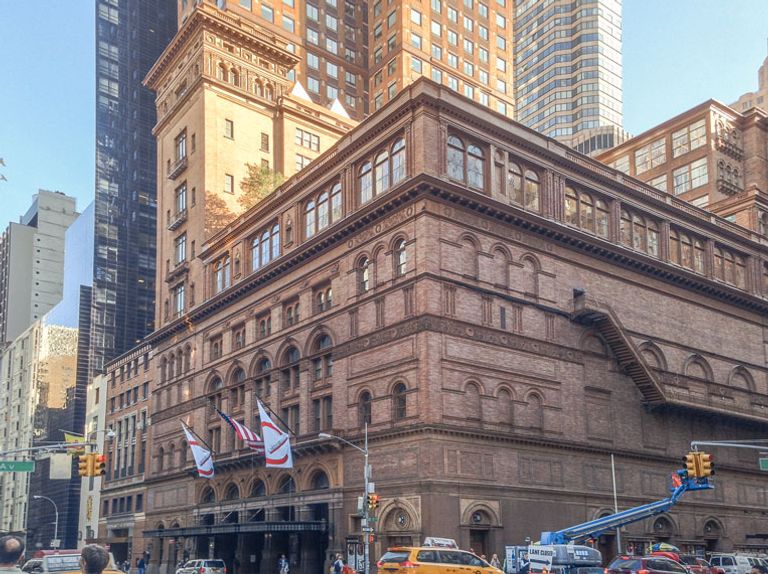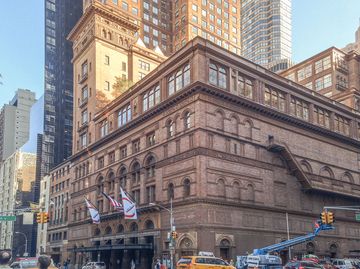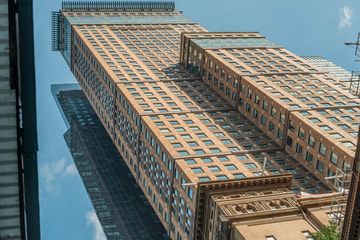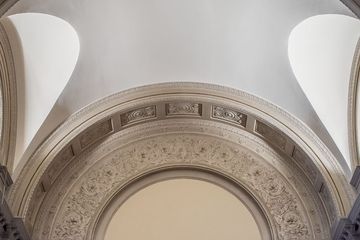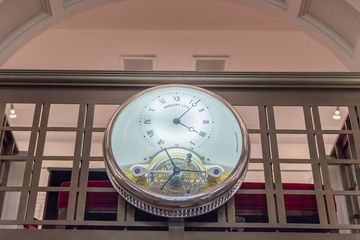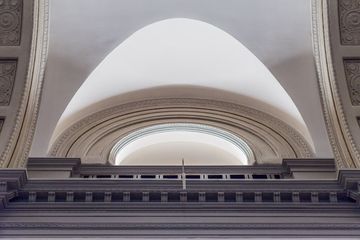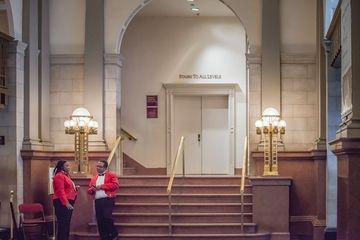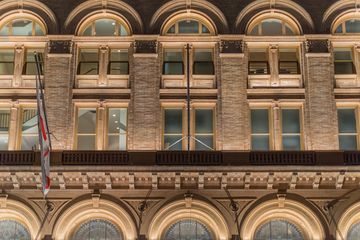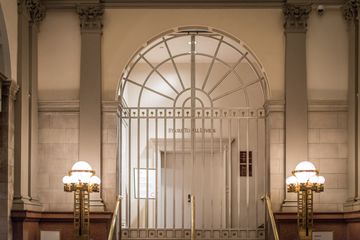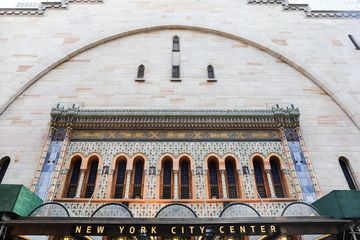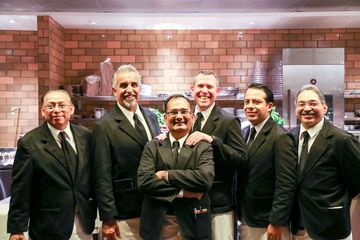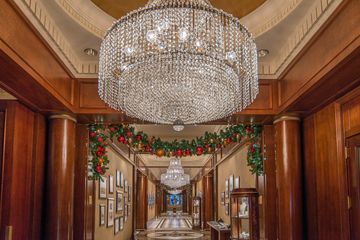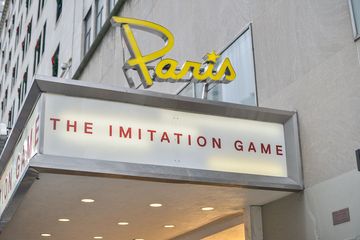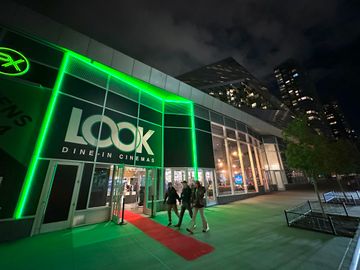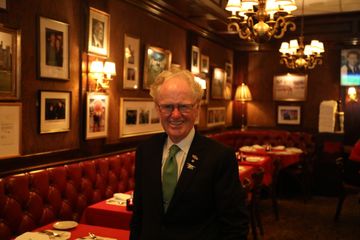Members of the Manhattan Sideways team stood in awe when we entered the New York City Center and realized that the extraordinary exterior matched the majestic interior. One of the most beautiful facades on the side streets is here on 55th, but behind its doors is a restored treasure trove. Hawley Abelow and Stanford Makishi, two passionate personnel from the marketing and programming departments, greeted us as we arrived and proceeded to give us a behind-the-scenes tour of what they termed to be “The family business of performing arts centers of New York. ” Stanford called it the “most ‘un-corporate’ large venue” he has witnessed, and he and Hawley both have the credentials to make that judgment, having worked at Carnegie Hall and Lincoln Center. Both went on to say that even though they have to book acts with a certain amount of popularity in order to be financially viable, they are mainly concerned with what they put on the stage, rather than the profits. City Center also displays a refreshing lack of competitive spirit: “Other philanthropic programs are our colleagues, not competitors, ” Stanford explained, while detailing his amicable dealings with some of the big theaters in the city. We started out walking on the center stage itself, where we could stare out at the breathtaking view of the tiers of seating. Each level was an intricately carved masterpiece, reminiscent of a Russian cathedral. Stanford said that dancers, actors and musicians love performing at City Center because the theater is built so that every seat feels close to the stage. He told us that their left wing is legendary, as there is a wall only a few feet from the edge of the stage. Apparently every ballerina knows not to make extravagant leaps off the left side unless they have someone waiting to prevent them from smashing into the wall. Stanford is qualified to speak about the performer’s experience, since he was a dancer for many years, and City Center was the first New York location at which he danced. On our particular visit, the stage was getting set up for that evening's performance by Bjork. Though Hawley is not a dancer, her career has similarly come full circle: when we explored the downstairs theater spaces, used by the Women’s Project and Manhattan Theater Company, she relayed that she started in the Production department at Manhattan Theater Company. Though not as grand as the main performance space, the downstairs theaters are more versatile. Stage 2 appears to be a “black box” theater, in which producers have more freedom with how they decide to set up the audience seating and set. Stage 1, on the day we saw it, was completely bare. This is not to say it was empty: cords and lights and ladders filled the stage, showing us a surgical biopsy of the theater. “This is as raw as it gets, ” Hawley commented. We also had the privilege to peek into one of the City Center’s dance studios, where we observed men and women twisting like tilted windmills. Stanford and Hawley told us that the spaces, which are rented out to different companies, are heavily sought after because they are much larger than many studios in New York. Broadway casts covet them, but they often go to not-for-profit groups. “Broadway is not our priority, ” Hawley stated. There was a "throne" at the back of the room, which was originally built as an auditorium for the Ancient Arabic Order of the Nobles of the Mystic Shrine, an appendant body to the Freemasons. Stanford told us that they used to hold their secret meetings in the spaces that are now studios, and the man presiding would sit on the throne. It was when Stanford and Hawley began speaking about “Fall for Dance, ” an event that aims to bring the “highest quality dance to the largest possible audience, ” that they became especially animated. As Holly declared, “You can’t come to this show and not fall in love with dance. ” The performances take place in the early fall, and apparently people line up in the middle of the night to be first to purchase tickets when they go on sale the following morning. Our tour continued to the lobby, which reminded us of a receiving hall in a palace. The design is neo-Moorish with murals depicting desert scenes. Hawley remarked that the colorful, intricate designs had been painted over in white during the 1970s due to a misguided sense of aestheticism, but in the recent renovations, they hired specialists who uncovered the original design. At the same time, screens were installed that display rainbow rivulets. Stanford informed us that the video was specially curated by the Parrish Art Museum in Southampton. Another dazzling piece of art was a mural that stretched across an entire wall of the Patron’s Lobby. It was created by a Cuban artist, and had been borrowed to complement his country's dance troupe’s performance. “We try to make performances meaningful for the audiences, ” Sanford commented. Every element of the theater is in place to enhance what is on the stage.
